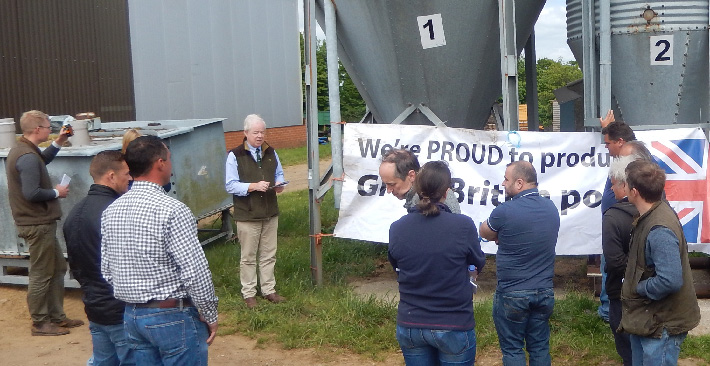No rays of sunlight on an otherwise grey day, with the SPP continuing to lose ground and slipping again by a very significant 1.49p to stand at 127.84p, which is another “low” since the SPP was created.
As a result, bacon pig contract payments tied to the SPP or other index prices will also be heading south, and spot trade was reportedly very quiet, with some spot buyers having enough pigs on hand from their regular suppliers to avoid the need to go into the market. During a thin trading session, one-off spot loads of baconers were trading in the 123–126p range, although some of the smaller fresh meat outlets were paying more than this, but only for relatively limited numbers of pigs.
The advice to producers is to keep on top of pigs and put as many on contract as can possibly be sent, even if they’re at slightly lower weights, to avoid a pre-Christmas rollover situation arising.
The euro ended another relatively quiet week, trading on Friday afternoon worth 73.52p, down from 74.04p a week earlier, but cull sow quotes have generally remained at similar levels within the 62-65p range.
Not much joy in the weaner market either, with the latest AHDB ex-farm 30kg average slipping from £44.52 to £43.58, although 7kg values lifted very slightly from £32 to £32.16/head. 30kg weaner buyers have been keeping a wary eye on the calendar, and with the Christmas holiday period 10 weeks away, will be trying to avoid having too many finishers to sell at that time.
However, looking further ahead, if normal seasonal trends are repeated, the outlook for 7kg pigs that will be finishers in early March might be slightly brighter . . . we’ll see.
On the feed front, although spot UK ex-farm prices are currently close to their lowest level since 2009/10, forward 2015/16 prices are showing modest premiums. Following three good growing seasons, the law of averages dictates that possibly yields could be cut in 2016, which could put up prices.
Although November futures prices on the LIFFE Exchange saw feed wheat easing to £114.50/t, March 2016 was looking significantly dearer at £120.55/t, and longer positions in January 2017 are now trading at £132.75/t.
And finally, publication of the June 2015 UK pig census shows that there were nearly 2% fewer pigs in the UK at that time compared to a year earlier, but the number of gilts being kept for first time breeding has risen by 3%, so on an overall basis, it looks as though the size of the UK herd will remain relatively stable.
With better productivity and the effectiveness of PCV2 vaccines, we could still see more pigs on the market next year, which may help to keep a lid on prices, especially if this pattern is repeated throughout the EU mainland.
With tough times ahead, it may be that some producers will be forced to cull all or some of their herds to meet rising borrowings, which could ultimately lead to a shortage of finished pigs in the system when the June 2016 census is published. But the same pattern needs to be repeated in Europe too, although our UK welfare-friendly product will find it hard to compete with large volumes of intensively produced foreign pigmeat . . . same old problem!




